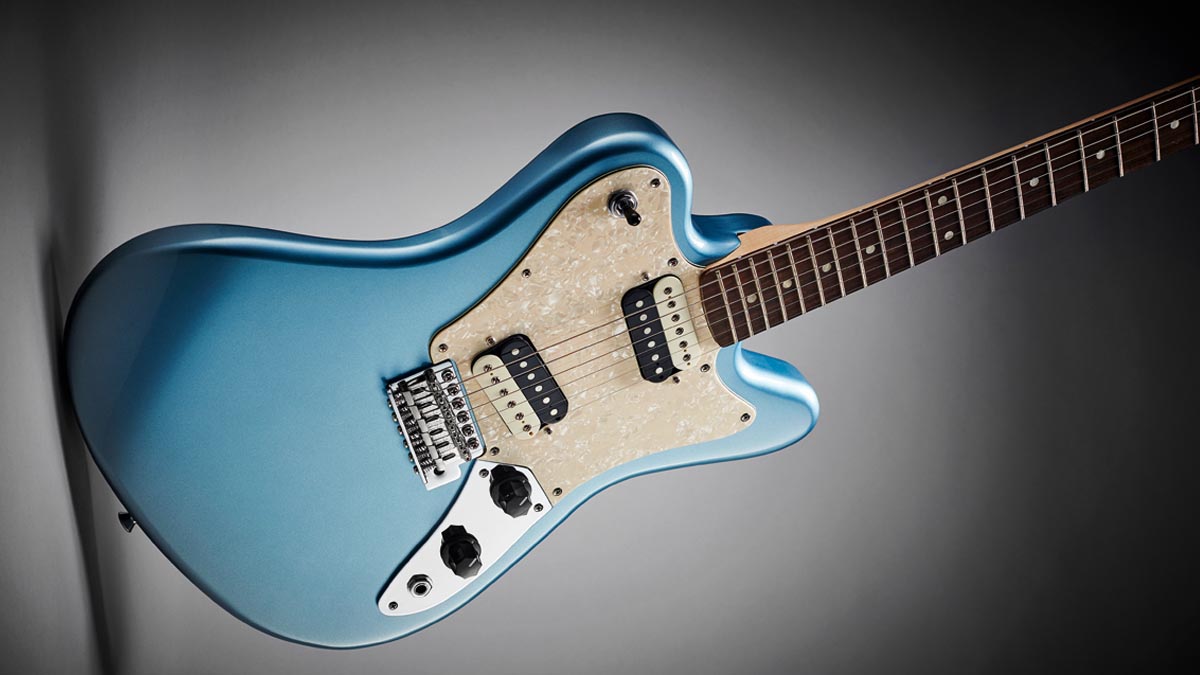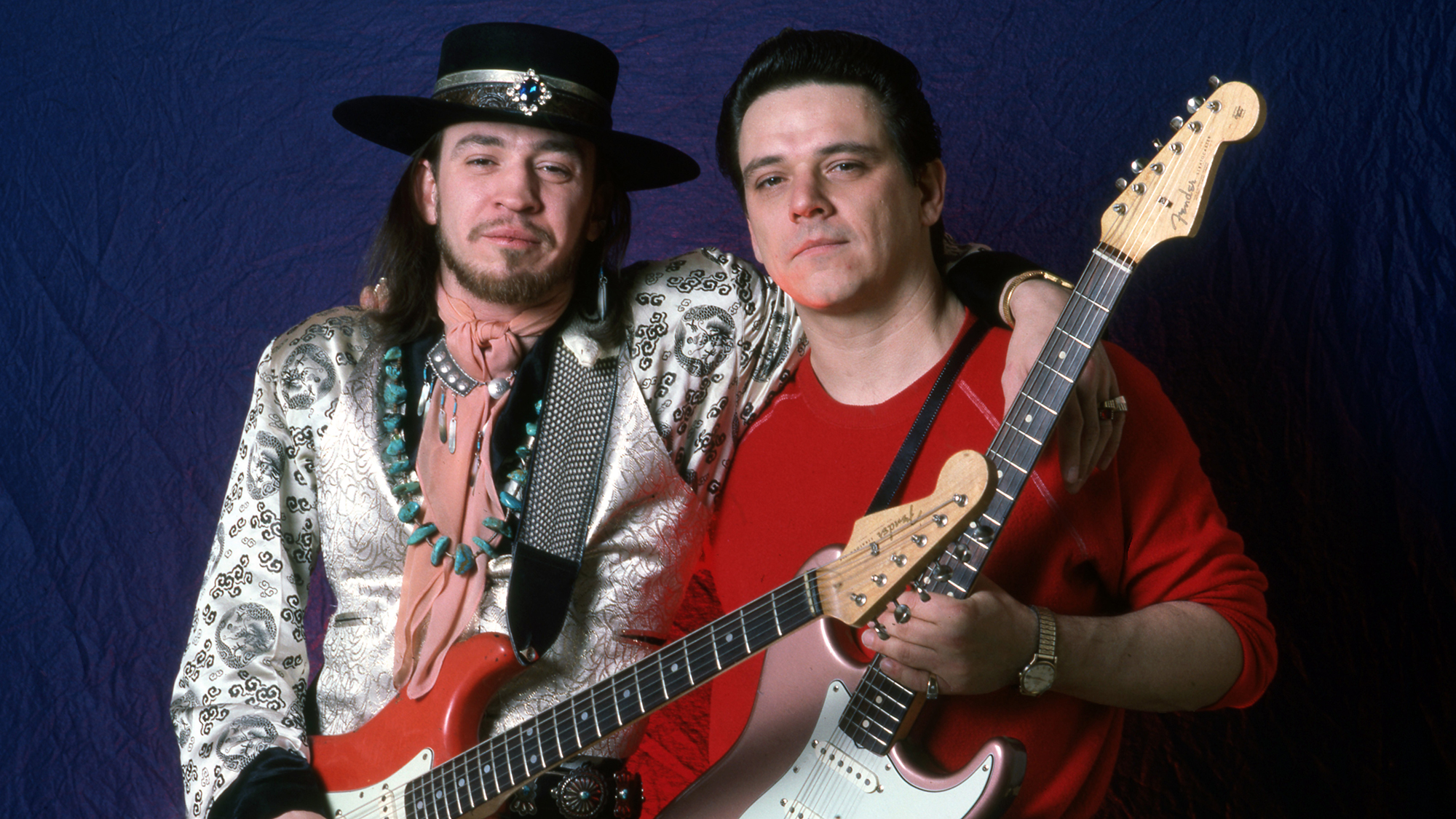Guitar World Verdict
A most approachable little oddball with a short 24" scale that makes an easy ride for beginners, the Super-Sonic has no shortage of charm. Size up on your strings and it'll be hours of fun for alternative styles.
Pros
- +
Short scale and low price make it a good shout for beginners.
- +
Offset body and finish looks very nice.
- +
Tones are an excellent platform for pedalboard experiments.
- +
Good news, Andy Summers fans – it takes the pain out of Add9s.
- +
Reverse headstock is very cool – and well executed.
Cons
- -
Ships with 0.009-gauge strings on a 24”.
- -
Middle position lacks oomph.
- -
Large-fingered players might find fretboard cramped.
You can trust Guitar World
Short-scale electric guitars are having a moment right now. Whether it’s because of the influx of new guitarists during the pandemic, or the raft of musicians playing guitar alongside other instruments, more accessibly proportioned models seem to be hitting the market now than ever before.
But while the format lends itself to quirky-by-nature offset bodies, none are quite so bizarre as the late-’90s Squier Super-Sonic, which received a reissue this year as part of the Paranormal Series.
Before you ask, no, we haven’t accidentally flipped the image. The legend goes that former Squier marketing manager Joe Carducci was so inspired by an image of Jimi Hendrix playing a Jazzmaster upside-down, he took it upon himself to recreate this aesthetic for right-handed players.
The result is certainly a curious creature, with a back-to-front body and colossal reverse CBS-era headstock. But the differences between the Super-Sonic and the rest of the Fender stable run deep. For starters, the two own-brand Atomic humbuckers – one of which is offset – are controlled by a pair of volume controls, without a tone knob in sight.

As guitarists increasingly turn to pedals rather than tone controls to change their sound, that’s no great loss – and it even means you can switch one pickup off to get your Morellian toggle-switching on. The bridge volume is located nearest to the player, a quirk which could be a pro or a con depending on which pickup you use most frequently.
There’s also a Strat-style vibrato, as opposed to the typical Jaguar/Jazzmaster floater you might expect, an ‘S’-stamped neck plate with integrated strap pin screw, and a heel that’s so highly contoured it rivals even Fender’s big-ticket American Ultra series.
That’s a damn good thing, because the Super-Sonic’s USP is not only its short scale length (24”), but also its narrow 40mm nut width. For context, most Fenders are around the 42mm mark, and even Squier’s beginner-targeted Mini models have a width of 40.6mm.
It’s that combination of tight string spacing and a downsized fingerboard that lends the Super-Sonic its name – provided your digits are shapely enough, you can speed around this thing with the greatest of ease. Laser-gun sweep picking and Message In A Bottle-style add9s suddenly become a breeze, and going back to a ‘regular’-scale guitar feels like a chore after a few hours on this lithe number. Of course, there are payoffs.
Provided your digits are shapely enough, you can speed around this thing with the greatest of ease
Alternate-picking runs at the top of the ’board can end up feeling like the final rounds of a game of Twister. But that’s all down to hand size and personal taste. We do take issue, however, with Fender’s decision to fit 0.009-gauge strings on a 24” scale length guitar that features a Strat-style vibrato.
Yes, the light strings reinforce the lightning-quick feel, but they simply don’t have the tension to handle the wild ride of a divebombing Strat tremolo, whereas they might be able to stomach the gentler dives of a Jag trem. If you intend to use the vibrato at all, we’d recommend setting this puppy up with 0.010s or above.
The punchy Atomic humbuckers, however, possess a more universal feel. Combined with the resonant poplar body, they produce incredible clarity when used with distortion. That makes this guitar a natural pairing with effects, too – lashings of modulation and octave sound superb.
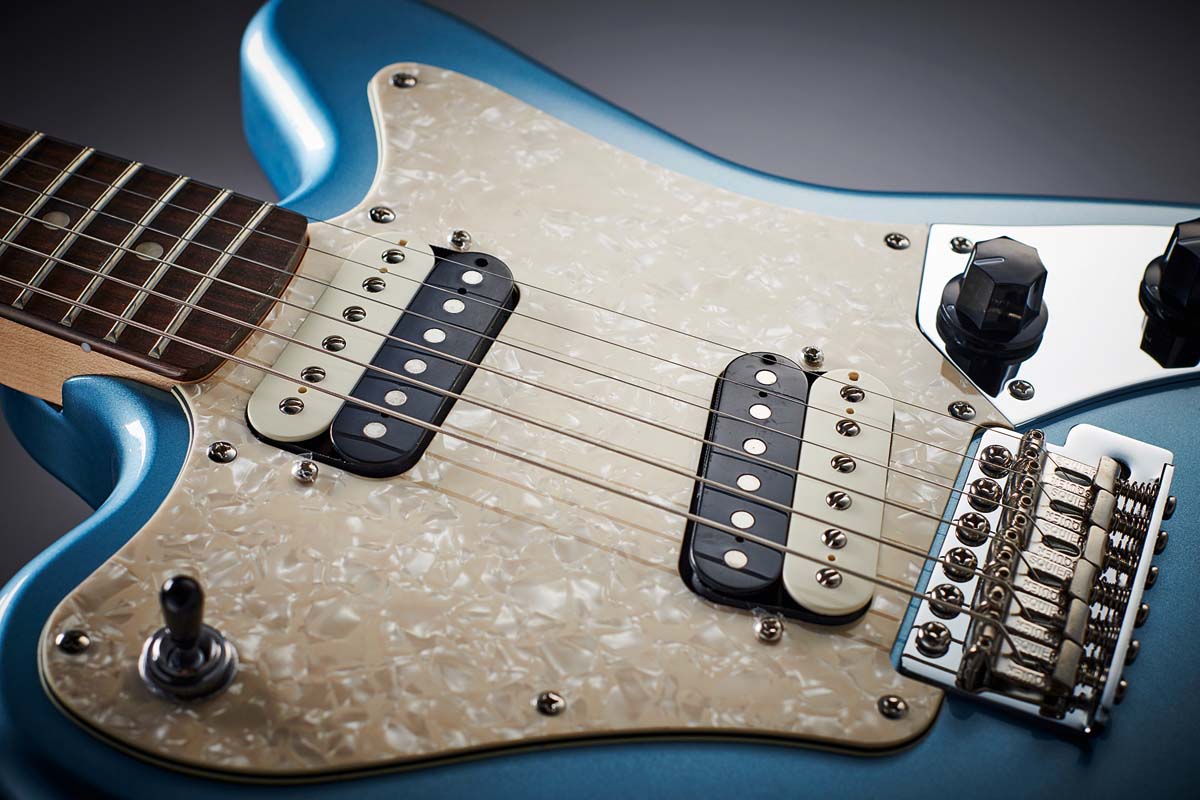
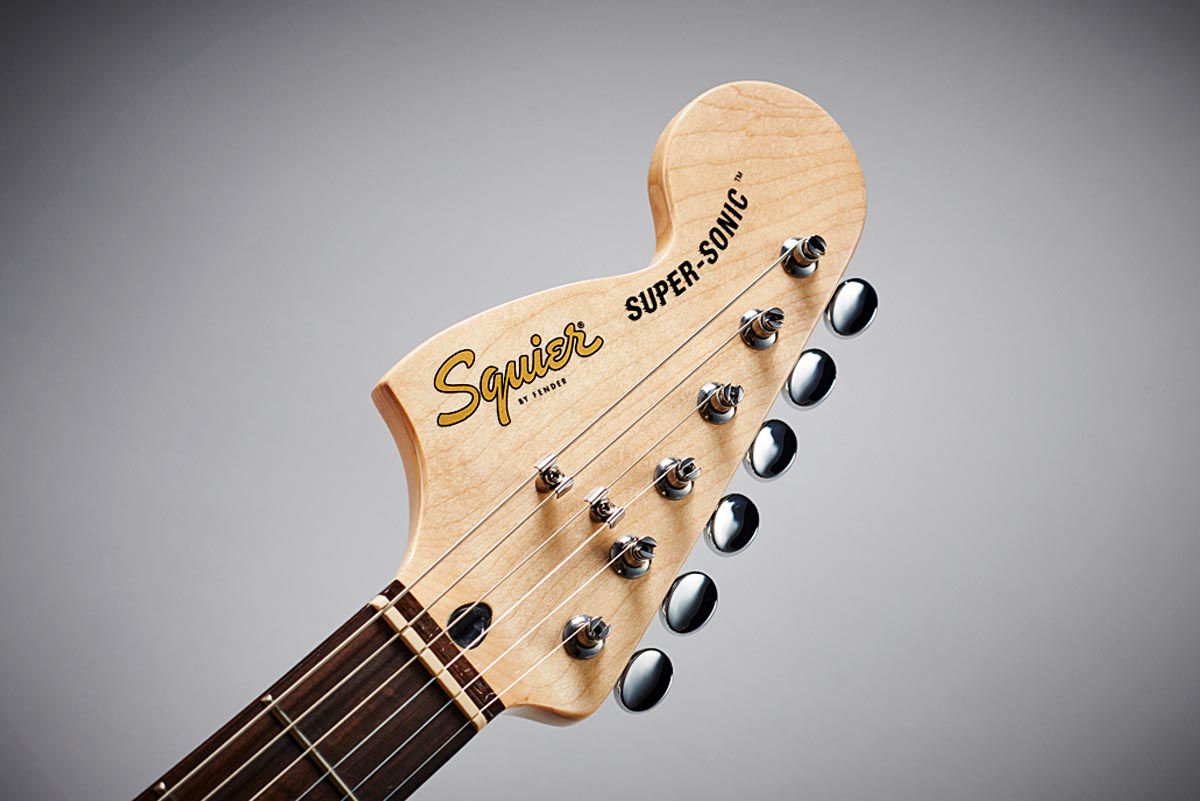
We were gratified that the neck humbucker was plenty bright, while there’s a sharp yet rich attack from the bridge pickup, whose angled position means it never gets overly brash.
The middle position was a bit of a letdown, sounding like a slightly flatter version of the neck pickup, but its hollowed-out tones could certainly find a place in garage-rock or QOTSA-style tunes.
The Super-Sonic provides a playing experience quite unlike any other Fender model – and consequently, it will win just as many fans as it does detractors.
Those eccentricities mean it may not end up as a main guitar for a lot of players, but Fender has priced it, and the rest of the Paranormal Series, accordingly. It really is tremendous fun to play, especially if you’re into indie, math-rock or noisy shred – we implore you to give it a try.
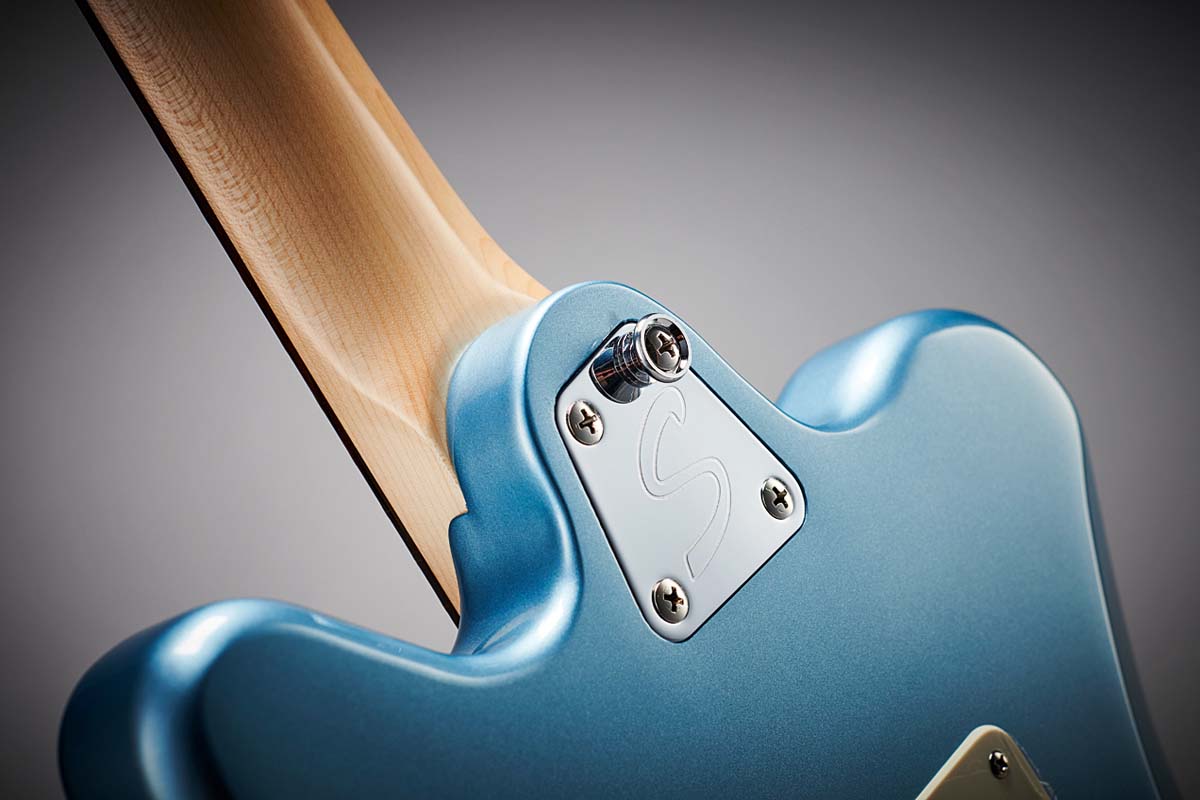
Specs
- PRICE: $349 / £399
- BODY: Poplar
- NECK: Maple, C shape
- SCALE: 24” (610mm)
- FINGERBOARD: Indian Laurel, 9.5” compound radius
- FRETS: 22
- PICKUPS: 2x Atomic humbuckers
- CONTROLS: Bridge pickup volume, neck pickup volume
- HARDWARE: Vintage-style Synchronized Tremolo, vintage-style tuners
- LEFT-HANDED: No
- FINISH: Ice Blue Metallic, Graphite Metallic
- CONTACT: Fender

Mike is Editor-in-Chief of GuitarWorld.com, in addition to being an offset fiend and recovering pedal addict. He has a master's degree in journalism from Cardiff University, and over a decade's experience writing and editing for guitar publications including MusicRadar, Total Guitar and Guitarist, as well as 20 years of recording and live experience in original and function bands. During his career, he has interviewed the likes of John Frusciante, Chris Cornell, Tom Morello, Matt Bellamy, Kirk Hammett, Jerry Cantrell, Joe Satriani, Tom DeLonge, Ed O'Brien, Polyphia, Tosin Abasi, Yvette Young and many more. In his free time, you'll find him making progressive instrumental rock under the nom de plume Maebe.
“This would make for the perfect first guitar for any style of player whether they’re trying to imitate John Mayer or John Petrucci”: Mooer MSC10 Pro review
“The most in-demand mods straight from the factory”: Fender’s elevated Player II Modified line brings the firm’s most sought-after guitar upgrades to the masses
